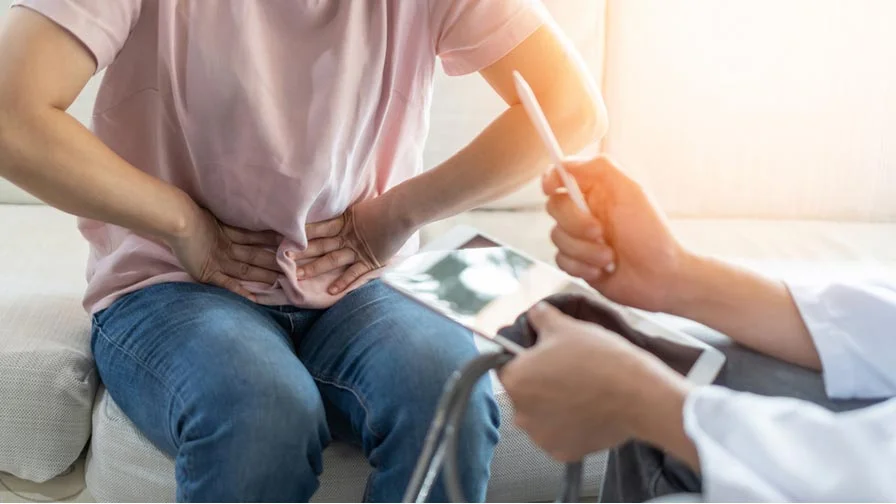Rectal Prolapse Overview

Fast Facts on Rectal Prolapse
Rectal prolapse is common in adults with long-term chronic constipation.
- It is more common in women than in men, especially over 50 years.
- People who have partial or complete rectal prolapse need surgery for treatment.
What Causes Rectal Prolapse
Rectal prolapse can occur as a result of following conditions:
- Chronic constipation or chronic diarrhea
- Long-term history of straining during bowel movement
- Injury to pelvic area or anal region
- Weak anal sphincter
- Malnutrition
- Aging
- Damage to nerves – pregnancy or spinal injury
- Other diseases or conditions such as diabetes, Chronic Obstructive Pulmonary Disease (COPD), hysterectomy, infection in the intestine
Anal intercourse
Top Symptoms of Rectal Prolapse
Fecal incontinence
- Leakage of blood or pus from the anus
- Anal pain, itching, burning and bleeding
- Feeling of not being able to empty the bowels completely
- Red tissues that protrude out of the anus
Prevention
Avoid constipation
- Include fiber diet such as fruits, vegetables
- Exercise to strengthen pelvic area
- Avoid processed food, refined sugar in your diet
- Drink plenty of water and fluids
Types of Rectal Prolapse
There are three types of rectal prolapse:
Internal Prolapse
The rectum starts to slip but does not extend to anus. It may usually happen in adults due to other intestinal problems such as polyp, tumor or other intestinal tissue growth.
Partial Prolapse:
It is also known as mucosal prolapse. The part rectum moves out of place and usually sticks to the anus. This happens when you strain during a bowel movement.
Complete prolapse:
The complete wall of rectum falls down from its place and extends out of the anus. In this case, the prolapsed tissues may remain outside all the time.
Diagnosis
Treatment of Rectal Prolapse
Podophyllum
Homeopathic medicine that helps when rectum prolapse occurs while passing stool.
Ignatia
This medicine is given when rectum prolapse occurs even with soft stool.
Ruta Graveolens
When prolapse occurs after straining or post-delivery.
Aesculius hippo
This is prescribed when rectal prolapse is due to chronic piles.
Ayurvedic Medicines for Prolapse of Rectum
Though doctors recommend surgery to treat rectal prolapse, Ayurvedic medicines ensure that you do not get rectal prolapse in the future. The medicines include:
Mushika Taila
This oil is applied to the prolapsed area and bandage is tied to keep it intact at its position
Triphala
This has astringent properties that heals the wound.
Changeri Grita
This treats the symptoms of prolapsed rectum such as diarrhea, bloating, piles, malabsorption syndrome.
Bola Parpati
It helps treat the bleeding disorder.
Ashokarishta
This is usually for women suffering from issues of heavy periods, menstrual pain due to rectal prolapse. It provides great relief.
Aravindasava
It improves digestion and strengthens the muscles.
Kutajarishta
It can be consumed on a regular basis to relieve the persistent effects of fever and malabsorption syndrome.
Manibhadra Kuta
This Ayurvedic medicine is for those who suffer from intestinal worms.
Types of Surgery
There are two surgical procedures to treat rectal prolapse:
Abdominal Repair through Open Surgery:
In this approach, the doctor makes an incision in the abdominal area. It is usually performed under general anesthesia. The doctor places the rectum back in place. The surgeon may also remove a part of the colon in case of patients with chronic constipation.
Laparoscopic rectopexy:
This is another approach to treat rectal prolapse where the rectum is restored to its original position in the pelvis. It no longer protrudes into the anal region. The doctor makes small incisions in the abdomen and inserts a laparoscope. A laparoscope has a camera attached on top of it that will project the images of the internal structure on the monitor. The surgeon locates the sigmoid in the colon and rectum. The rectum is freed from its surroundings and lifted gently to its position. In some cases the doctor may remove a part of rectum, which he will discuss before the surgery itself. A mesh may or may not be placed to strengthen the area, depending on the condition. Finally, the incisions are closed with adhesive glue.
Rectal Prolapse vs Hemorrhoids
Complications: A Rectal Prolapse can Become an Emergency
- Rectal bleeding
- Bowel obstruction
- Recurrence of rectal prolapse
- Development of fecal incontinence
- Narrowing of anal opening
- Fistula
- Worsening or development of constipation
Exercise Tips
- Pelvic floor exercise supports you rectum and hold it in the correct position.
- Perform kegel exercises early in the day.
- After a bowel movement, always draw up your pelvic floor muscles.
- Pelvic floor exercises must be in the upright position.
Our Clinical Footprint
30000+
Happy Patients
10000+
Surgeries
100+
Doctors
70+
Clinics
20+
Cities
200+
Hospitals
Our Clinical Footprint
30000+
Happy Patients
10000+
Surgeries
100+
Doctors
70+
Clinics
20+
Cities
200+
Hospitals
